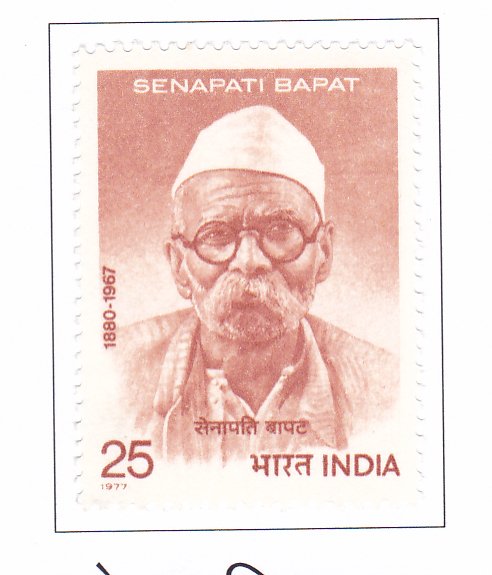Senapati Bapat (1880-1967)

Technical Data
| Stamp Set | Personality Series |
|---|---|
| Date of Issue | November 28, 1977 |
| Denomination | 25 p |
| Quantity | 3,000,000 |
| Perforation | comb 13 |
| Printer | Security Printing Press, Nashik |
| Watermark | Asokan Capital Multiple [SL] |
| Colors | Chestnut |
| Catalog Codes |
Michel IN 743 Stamp Number IN 780 Yvert et Tellier IN 538 Stanley Gibbons IN 870 |
| Themes | Famous people | Independency Activists | Men | Optical Instruments |
Pandurang Mahadev Bapat, affectionately known as ‘Senapati Bapat’ for his pivotal role in the freedom struggle, was born on November 12, 1880, in Parner, Maharashtra. Despite facing numerous challenges, he excelled in academics and received a scholarship to study Engineering in England. However, his activism for India’s independence led to the withdrawal of his scholarship by the Bombay University.
Returning to India in 1908, Bapat joined forces with revolutionaries in Bengal, participating in activities aimed at liberating the country from British rule. He went underground for four years to evade arrest in connection with the Maniktola Bomb case. From 1913 to 1920, he devoted himself to social work and played an active role in politics, serving as the sub-editor of Lokmanya Tilak’s ‘Maratha’.
Bapat’s leadership during the ‘Mulshi Satyagraha’ marked a significant chapter in the freedom movement, earning him the title ‘Senapati’. Despite enduring nearly two decades of imprisonment, he remained resolute in his commitment to India’s independence.
Following independence, Bapat continued his activism, advocating for the formation of Samyukta Maharashtra and participating in the Goa liberation movement. In addition to his revolutionary pursuits, he was a scholarly figure, known for his commentaries on the Bhagavad Gita and the Upanishads, as well as translations from Sri Aurobindo.
Senapati Bapat passed away on November 28, 1967, leaving behind a legacy of courage, sacrifice, and unwavering dedication to the cause of freedom.
